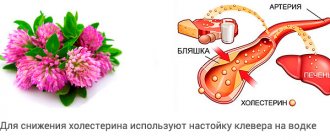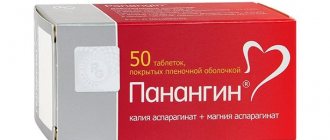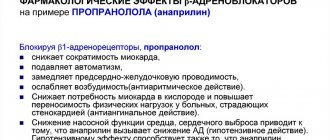Phenomenal Russian tennis player Maria Sharapova instantly made a drug called meldonium famous after failing a doping test. More than a hundred other international athletes have also been caught using this new banned substance. Now that the drug has gained worldwide fame, doctors fear that meldonium will be actively used by amateurs seeking to gain an advantage in competitions. "With the drug's new fame, a lot of people are going to try it," says Dr. Paul D. Thompson, chief of cardiology at Hartford Hospital in Connecticut. "We're learning a lot about the side effects of meldonium very quickly." This is why you should think twice about whether to take it or not.
Composition and release form
The drug is produced by several manufacturers, and its composition depends on the form of release. It is presented on the pharmaceutical market in two forms:
- solution for injection, 1 ml contains 100 mg of meldonium dihydrate;
- capsules with a dosage of the main active ingredient of 250 or 500 mg.
The capsules contain excipients - magnesium stearate, potato starch, silicon dioxide and microcrystalline cellulose. Contents: hygroscopic white powder. In pharmacies it is sold in cardboard boxes of 30, 40, 60 pieces.
The solution is a slightly yellowish or transparent substance, containing water for injection as an excipient. Sold in 5 ml ampoules of 10 pieces, packed in cardboard boxes.
The solution for injection into a vein or muscle has the fastest absorption (immediately after administration), but it is more convenient to take capsules at home.
Effect of the drug
Meldonium improves metabolic processes in the heart muscle and provides energy to the myocardium, as well as:
- improves blood circulation in the brain;
- normalizes the inflow and outflow of blood in areas with insufficient blood supply;
- slows down the formation of a zone of tissue death;
- brings myocardial performance indicators back to normal;
- provides brain and heart cells with oxygen;
- removes toxins;
- normalizes the functioning of the nervous system;
- shortens the rehabilitation period after heart surgery or stroke;
- helps in the treatment of alcoholism.
How Mildronate works
The active substance meldonium, acting in several directions at once, establishes a balance between the cells’ need for oxygen and its delivery, removes accumulated toxins and neutralizes their negative impact on the body. Thanks to this, a person taking Mildronate becomes more resilient to mental and physical stress and gets an improved metabolism.
Other results of using Mildronate:
- normalization of cerebral circulation;
- improvement of blood circulation in the area of ischemia;
- slowing down the formation of the necrotic zone;
- elimination of functional disorders of the nervous system;
- reduction of the rehabilitation period in the treatment of heart disease, stroke and alcoholism
Mildronate is easily absorbed and excreted from the body after 3-6 hours. Although traces of it can still be found for several months.
Indications for use
Meldonium is prescribed as an additional therapy for serious diagnoses and certain conditions:
- cardiac ischemia;
- myocardial dysfunction;
- disruption of blood supply to the brain as a result of a stroke;
- rehabilitation period after surgical interventions;
- heavy physical activity;
- low performance, weakness and chronic fatigue;
- withdrawal syndrome in chronic alcoholism;
- dishormonal cardiomyopathy.
The drug is administered by injection through the skin of the lower eyelid for hemorrhages, circulatory disorders or thrombosis of the veins in the retina, pathologies of the fundus vessels, as well as for diabetic or hypertensive retinopathy.
Metabolic cardioprotection with meldonium in coronary heart disease: results and prospects
Since the middle of the last century, cardiovascular diseases (CVDs) have remained the leading cause of death worldwide [1]. According to the World Health Organization, about 17 million people die from CVDs worldwide every year. In Russia, the rate of premature mortality from coronary heart disease (CHD) is one of the highest in Europe, which is associated with its high prevalence: among the entire population 13.5 ± 0.1%, among men - 14.3 ± 0.3%, among women - 13.0 ± 0.2% [2].
Currently, the treatment of IHD is based on the use of drugs that improve the prognosis, prevent the development of myocardial infarction, sudden coronary death and heart failure, and to achieve this goal, antiplatelet agents, statins, beta-blockers (BAB), angiotensin-converting enzyme inhibitors (ACEIs) are used. , nitrates, calcium antagonists. However, the use of hemodynamic and neurohormonal drugs that optimize the relationship between the oxygen needs of the heart muscle and its delivery does not provide sufficient satisfaction in real clinical practice. This may be due to the fact that the possibilities of therapy in these areas are limited by the functioning conditions of the myocardium during ischemia, the presence of other adaptive and maladaptive processes that have a significant impact on cardiomyocytes (CMC) and the myocardium as a whole, as well as the comorbidity of clinical situations (metabolic syndrome, diabetes mellitus). type 2 diabetes, arterial hypertension, etc.). In addition, these drugs are characterized by numerous side effects, which are, in fact, a continuation of their main therapeutically desirable effect on the cardiovascular system and, in some cases, significantly limit their use [3].
Understanding that IHD (at the biochemical level) is a discrepancy between the level of oxygen consumption by the myocardium (the substrate for oxidative phosphorylation for the formation of ATP) and the volume of its delivery by the coronary bloodstream, as well as a violation of the beta-oxidation of free fatty acids (FFA) in the mitochondria of cardiomyocytes with accumulation in the mitochondria underoxidized products - acylcarnitine and acylcoenzyme A - acetyl-CoA (Fig. 1), as well as the essence of changes occurring in the metabolism of CMC during hypoxia, the formation of new ideas about the pathogenesis of IHD, the description of new adaptive ischemic syndromes (“stunning, hibernation and preconditioning of the myocardium” , “metabolic remodeling” (the term was proposed by M. van Bilsen et al. in 2004 [4] to denote pathological changes mediated by excess activation of fatty acids in the cardiomyocyte)), opened the possibility for a new direction of drug effects on ischemic myocardium - myocardial cytoprotection ( MC).
The ideology of metabolic cardioprotection has been around for a long time. A large number of myocardial cytoprotectors are known, belonging to drugs of various chemical classes, the action of which is not associated with hemodynamic effects, but is mediated by optimization of the processes of formation and energy consumption, correction of the function of the respiratory chain, normalization of the balance between the intensity of free radical oxidation processes and antioxidant protection, direct influence on cardiomyocytes. This promotes their survival under ischemic conditions and prevents the formation of “metabolic remodeling of the myocardium.” Unfortunately, many of the drugs used have not stood the test of time (adenosine triphosphoric acid, riboxin, glucose, etc.), which was due to the lack of sufficient knowledge about the mechanisms of cell energy balance under normal conditions and under ischemic conditions.
The high increased interest in this group of drugs was demonstrated at the European Congress of Cardiology in 2011 in Paris, where it was emphasized that atherosclerotic heart disease is not the only factor causing ischemia, and more than 50% of myocardial infarctions are recorded in patients without critical stenosis. In this regard, an alternative, “revolutionary” (“Copernican Revolution”) approach to the treatment of patients with coronary artery disease was proposed: to focus on the cardiomyocyte as the main target of ischemia, rather than on the coronary artery. In this regard, choose a strategy to protect the CMC from ischemic damage, regardless of the causative mechanism, since sufficient oxygen saturation for the myocardium is the most important condition for producing the energy necessary for its normal functioning [5]. Under physiological conditions, 10% of ATP is formed by oxidative phosphorylation in mitochondria due to aerobic glycolysis (breakdown of glucose to pyruvate). Replenishment of the remaining amount of energy for the functioning of CMC under normal oxygen supply occurs due to the oxidation of FFAs, the breakdown of which during oxidative phosphorylation ensures the synthesis of ATP up to 80%. However, compared to glucose, FFA is a less efficient source of ATP - “fuel” for the heart pump, since during their oxidation, 10% more O2 is required to produce the same amount of ATP. A pronounced imbalance between the oxygen demand during the oxidation of glucose and FFA towards the latter leads to the fact that during ischemia in the mitochondria of the CMC, a large amount of under-oxidized active forms of FFA accumulates, which further aggravates the uncoupling of oxidative phosphorylation, mediates the accumulation of free radicals, the formation of intracellular acidosis, and an increase in permeability cell membranes, release of intracellular enzymes, accumulation of calcium ions and, as a consequence, impaired contractility of the heart muscle [5]. If ischemia persists for a longer time, then damage to mitochondrial membranes occurs, activation of lysosomal enzymes and, as a result, death of CMC. Therefore, as a metabolic cardioprotective therapy in patients with coronary artery disease, first of all, drugs that block the partial oxidation of free fatty acids (FFA) - p-FOX inhibitors (partial fatty and oxidation inhibitors) are indicated.
Meldonium - 3-(2,2,2-trimethylhydrazinium) propionate (Cardionate®, Mildronate) reduces the intensity of beta-oxidation of free fatty acids by preventing their entry into mitochondria: it limits the transport through mitochondrial membranes of only long-chain fatty acids, while short-chain can freely penetrate into mitochondria and be oxidized there, without the accumulation of under-oxidized fatty acids inside mitochondria [6]. This distinguishes meldonium from trimetazidine, which, being a direct inhibitor of beta-oxidation of FFAs, inhibits beta-oxidation of long-chain and short-chain fatty acids in mitochondria, blocking the last reaction of the 4-stage process of FFA oxidation (3-ketoacyl-CoA thiolase) [7] , which does not interfere with the accumulation of activated fatty acids in mitochondria and the inevitable accumulation of their under-oxidized forms inside them. Being one of the strongest reversible inhibitors of gamma-butyrobetaine hydroxylase, which catalyzes the conversion of gamma-butyrobetaine to carnitine, meldonium thereby reduces the carnitine-dependent transport of fatty acids into the mitochondria of muscle tissue. This means that it is practically unable to have a toxic effect on mitochondrial respiration, since it does not block the oxidation of all fatty acids [8].
Other positive effects of meldonium have been established, and, above all, antioxidant. Meldonium reduces the intensity of lipid peroxidation and increases the activity of endogenous antioxidants, neutralizing the effects of oxidative stress [9].
It has been shown experimentally and clinically that meldonium can have a positive effect on endothelial dysfunction [10–12] and, accordingly, lead to normalization of vascular tone. Another mechanism for increasing the bioavailability of nitric oxide due to the use of meldonium is also being considered - a decrease in the intensity of its free radical inactivation [13]. In addition, it exhibits other vascular effects: it reduces peripheral vascular resistance and eliminates vasospasm caused by adrenaline and angiotensin [8, 14]. The drug has a number of pleiotropic effects: it increases sensitivity to insulin, changes the metabolism of glucose and lipids [15].
The high anti-ischemic effectiveness of meldonium has been demonstrated in a number of studies in recent years in angina pectoris (MILSS, MILSS I, MILSS II studies) [16–18], myocardial infarction [19], its positive effect on exercise tolerance, reduction of clinical manifestations of angina pectoris, reducing nitrate consumption [20, 21], including in elderly patients [22]. The feasibility of using meldonium in combination therapy for both systolic and diastolic chronic heart failure has been demonstrated [23].
Our clinic has sufficient experience in using the drug Cardionat® at a dose of 1000 mg in clinically difficult situations, namely in patients with chronic heart failure (CHF) of ischemic origin in combination with metabolic syndrome (MS) [24]. The drug Cardionat® was prescribed in a daily dose of 1000 mg as part of combination therapy for CHF to patients aged 45–65 years, CHF functional class II–III according to the OSHF classification (2002), who had suffered a myocardial infarction for 16 weeks. Our data demonstrated that the drug Cardionat® as part of combination therapy for patients with CHF and MS helps to improve the structural and functional parameters of the heart, reduce the proportion of patients with concentric remodeling of the left ventricle (LV) and eccentric LV hypertrophy, more frequent detection of normal LV geometry, and also by an increase in the proportion of patients with stage I of diastolic dysfunction (DD) due to a decrease in the number of patients with stages II and III. It has been established that additional administration of the drug Cardionat® helps to improve impaired autonomic regulation of the heart by reducing hypersympathicotonia and reducing the tension index of regulatory systems. The results we obtained are consistent with the experimental data obtained by Artyushkova E.V. (2009) [25] and indicating that the administration of the drug Cardionat® prevents an increase in adrenoreactivity and depletion of myocardial reserve during stress tests. The use of the drug Cardionat® as part of combination therapy for patients with CHF and MS is accompanied by an antianginal effect, subjective and objective improvement in the clinical condition and quality of life of patients. Our study revealed that the inclusion of the drug Cardionat® in the combination therapy of CHF and MS was accompanied by a positive effect on the functional state of the kidneys: in the group of patients receiving Cardionat®, there was a more noticeable decrease in the level of microalbuminuria, a decrease in the number of patients with depleted functional renal reserve and a clinically significant decrease in glomerular filtration rate. Apparently, Cardionate®, by increasing the synthesis of gamma-butyrobetaine (GBB), has vasodilating properties, improves blood supply to the kidneys, and restores impaired intraglomerular hemodynamics. In addition, in our opinion, the noted positive effect of the drug may be mediated by its positive effect on carbohydrate and lipid metabolism, insulin resistance, which justifies the pathogeneticity and feasibility of using the drug Cardionat® in the treatment of patients with coronary heart disease in complex comorbid situations, in particular in patients with disorders of carbohydrate and lipid metabolism (metabolic syndrome, type 2 diabetes mellitus), which makes it possible to enhance the anti-ischemic effect in target organs, thereby ensuring a better quality of life [15, 24]. Studies conducted to date have shown the feasibility of its inclusion in the complex treatment of diabetic retinopathy [26], a positive effect on the course of diabetic nephropathy, neuropathy [27], mnestic functions and quality of life in elderly patients with arterial hypertension [28], in the acute period of stroke and after a stroke [29], with diseases of peripheral arteries [30].
Thus, the concept of using myocardial cytoprotectors—drugs that effectively affect the energy metabolism of the cardiomyocyte and improve the efficiency of oxygen utilization by the myocardium under conditions of ischemia—allows us to assume the possibility of not only effective, but also pathogenetic effects not only in patients with coronary heart disease [31] (Fig. 2), but also in complex comorbid situations that a clinician encounters in real clinical practice.
Literature
- World Health Organization. The World Health Report 2003: Shaping the Future 2003.
- Shalnova S. A., Deev A. D. Coronary heart disease in Russia: prevalence and treatment (according to clinical and epidemiological studies) // Therapeutic archive. 2011; 1:7–12.
- Syrkin A.L., Dobrovolsky A.V. Anti-ischemic drugs of metabolic action // Consilium Medicum. 2002; 4 (11): 572–575.
- Van Bilsen M., Smeets PJ, Gilde AJ, van der Vusse GJ Metabolic remodeling of the failing heart: the cardiac bum-out syndrome? // Cardiovasc. Res. 2004; 61(2):218–226.
- Mario Marzilli. Preductal MR. Od desetiletych klinickych zkusenosti s lecbou u stabilni anginy pectoris k novym perspektivam // Medicina po promoci. 2011; 12(1):95–98.
- Dambrova M., Liepinsh E., Kalvinsh I. Mildronate: cardioprotective action through carnitine-lowering effect // Trends Cardiovasc Med. 2002, Aug; 12 (6): 275–279.
- Lopaschuk GD, Barr R., Thomas PD, Dyck JR Beneficial effects of trimetazidine in ex vivo working ischemic hearts are due to a stimulation of glucose oxidation secondary to inhibition of longchain 3-ketoacyl coenzyme a thiolase // Circ Res. 2005; 93: 33–37.
- Hanaki Y., Sugiyama S., Ozawa T. Effect of 3-(2,2,2, - trimelhylhydrazinium) propionate, gamma-butyrobetaine hydroxylase inhibitor, on isoproterenol - induced mitochondrial dysfunction // Res. Commun. Chem. Phatol. Pharmacol. 1999; 64: 157–160.
- Gordeev I.G., Luchinkina E.E., Lyusov V.A. Antioxidant effect of the cardioprotector mildronate in patients undergoing coronary revascularization // Russian Journal of Cardiology. 2009; 1 (75): 31–37.
- Korokin M.V., Artyushkova E.V., Pokrovsky M.V. et al. Study of the endothelial and cardioprotective properties of the drug "Cardionate" when modeling L-Name - induced nitric oxide deficiency // Kursk scientific and practical bulletin "Man and his health." 2007; 3:5–9.
- Artyushkova E. V., Pokrovsky M. V., Korokin M. V., Gureev V. V., Bobrakov K. E. Study of the endothelial protective effects of the drug “Cardionate” in an ADMA-like model of nitrogen deficiency with specific blockade of NO synthase / / International Journal on Immunorehabilitation (International Journal on Immunorehabilitation). 2009; 11 (1): 66–67.
- Ladygin A. Yu., Mikhin V. P., Ushkalov A. V. et al. The effectiveness of the use of Cardionate and Preductal MB for the correction of endothelial dysfunction in patients with coronary heart disease and stable angina pectoris. Abstracts of reports of the International Congress “Cardiology at the Crossroads of Sciences” together with the V International Symposium on Echocardiography and Vascular Ultrasound, the XVII Annual Scientific and Practical Conference “Current Issues in Cardiology”, Tyumen, May 19–21, 2010.
- Suslina Z. A., Maksimova M. Yu., Fedorova T. N. Chronic cerebrovascular diseases: clinical and antioxidant effectiveness of mildronate // Doctor. 2007; 4:3–7.
- Mkrtchyan V. R. Clinical pharmacology of drugs that improve myocardial energy metabolism: a textbook. M.: Ministry of Health of Russia, 2003. 24 p.
- Statsenko M. E., Evtereva E. D., Turkina S. V. et al. Possibility of using a myocardial cytoprotector in combination therapy of patients with chronic heart failure and metabolic syndrome // Consiliun Medicum (cardiology). 2010; 12 (10): 76–82.
- Dzerve V., Matisone D., Pozdnyakov Y., Oganov R. Mildronate improves the exercise tolerance in patients with stable angina: results of a long term clinical trial // Sem Cardiovasc Med. 2010; 16 (3): 1–8.
- Dzerve V. Efficacy of Mildronate in the treatment of coronary heart disease: results of the MILSS II study // Kviten. 2010; 7:236.
- Vilnis Dzerve, MILSS I Study Group. A Dose-Dependent Improvement in Exercise Tolerance in Patients With Stable Angina Treated With Mildronate: A Clinical Trial “MILSS I” // Medicina (Kaunas). 2011; 47 (10): 544–51.
- Kiselev A. R., Shvarts V. A., Posnenkova O. M. The effect of therapy with Cardionat on the quality of life in patients with acute myocardial infarction with ST segment elevation in the early post-infarction period. Federal State Institution Saratov Scientific Research Institute of Cardiology of Rosmedtekhnologii // Consilium Medicum. 2010; 12 (5): 94–98.
- Kuznetsova A.V., Teplyakov A.T. Evaluation of the effect of Cardionat on the effectiveness of antianginal therapy and the functional state of the myocardium in patients with coronary artery disease in combination with arterial hypertension associated with type 2 diabetes mellitus // Farmateka. 2007; 3:81–84.
- Vedeneva V.V., Mikhin V.P., Sharova V.G. et al. Comparative effectiveness of cardiocytoprotectors Kudesan and Cardionat in patients with stable angina pectoris: Abstracts of the International Congress “Cardiology at the Crossroads of Sciences” together with the V International Symposium on Echocardiography and Vascular Ultrasound, XVII Annual Scientific and Practical Conference “Current Issues in Cardiology”, Tyumen, May 19–21, 2010.
- Pustozerov V.G., Krasilnikova I.P., Kostromina M.A., Mikhailova M.N. Experience of using Cardionate in gerontological practice // Handbook of a polyclinic doctor. 2009; 9:20–21.
- Statsenko M. E., Turkina S. V., Belenkova S. V. Possibilities of using mildronate in patients with chronic heart failure with type 2 diabetes mellitus and autonomic cardiac neuropathy // Russian Journal of Cardiology. 2009; 3 (77): 69–75.
- Statsenko M. E., Turkina S. V., Sporova O. E. et al. The use of the drug Cardionat in combination therapy of chronic heart failure of ischemic etiology in patients with metabolic syndrome // Russian Journal of Cardiology. 2010; 4:35–39.
- Artyushkova E. V. Increasing the level of gamma-buterobetaine is a pharmacological target for the correction of endothelial dysfunction // Kuban Scientific Medical Bulletin. 2009; 4: 72–74.
- Poletaeva L.V., Turkina S.V., Statsenko M.E., Golikova I.A. The effect of mildronate as part of combination therapy on the pathological index of the retina in patients with type 2 diabetes mellitus. Abstracts of the report. XVI Russian National Congress "Man and Medicine". M., 2009. P. 343.
- Statsenko M. E., Poletaeva L. V., Turkina S. V., Dudchenko G. P. Possibility of using mildronate in the treatment of patients with diabetic peripheral sensorimotor neuropathy // Bulletin of the Volgograd State Medical University. 2009; 1 (29): 39–42.
- Statsenko M. E., Nedogoda S. V., Turkina S. V. et al. Possibilities of mildronate in the correction of cognitive impairment in elderly patients with arterial hypertension // Russian Journal of Cardiology. 2011; 4:91–95.
- Suslina Z. A., Maksimova M. Yu., Kistenev B. A., Fedorova T. N. Neuroprotection in ischemic stroke: the effectiveness of Mildronate // Pharmateka. 2005; 13:99–104.
- Dzerve V. New opportunities in the treatment of patients with peripheral arterial diseases: results of the MI&CI study // Liki Ukraine. 2010; 8 (144): 99–101.
- Mikhin V.P., Pozdnyakov Yu.M., Khlebodarov F.E., Koltsova O.N. Mildronate in cardiological practice - results, new directions, prospects // Cardiovascular therapy and prevention. 2012; 11(1):96–103.
M. E. Statsenko, Doctor of Medical Sciences, Professor S. V. Turkina, Candidate of Medical Sciences, Associate Professor
State Budgetary Educational Institution of Higher Professional Education of Volgograd State Medical University of the Ministry of Health and Social Development of Russia, Volgograd
Contact information for authors for correspondence
Meldonium: methods of application and doses
Depending on the dosage form used, the drug is prescribed orally, intravenously, intramuscularly or by eye injection.
The method, duration of therapy and dose are determined based on the indications and severity of the condition individually.
Instructions for use of Meldonium provide for several capsule administration regimens:
- for heart disease - 500-1000 mg per day, once or in two doses, with a course of treatment of 1-1.5 months;
- in case of impaired cerebral circulation - 500-1000 mg per day for 1-1.5 months;
- for chronic alcohol intoxication, the dose reaches 500 mg in 4 doses per day, the course is up to 10 days;
- with systematic heavy physical activity, during the rehabilitation period after surgery - 250 mg 4 times a day for two weeks.
Athletes are prescribed capsules of 500-1000 mg twice a day before training and during competitions for 2-3 weeks.
When prescribing injections, the dose is 500-1000 mg per day.
For unstable angina, a condition after myocardial infarction, the solution is administered intravenously, 1-2 ampoules once a day for 4 days.
0.5 ml of the drug with a concentration of meldonium of 500 mg per 5 ml is injected into the retina of the eye, the course of treatment is 10 days.
Use of Mildronate in sports
Mildronate is highly valued by athletes for its ability to improve cellular metabolism, as it accelerates the removal of toxins and free radicals from the body. Thus, Mildronate has an antioxidant effect: it improves well-being, slows down the aging process of cells and helps rapid muscle recovery.
Athletes take the drug to reduce pain and recover faster after training. As a result of taking Mildronate, symptoms of overtraining are relieved and fatigue goes away. The athlete’s general condition improves, which can affect his personal performance.
The benefits of the drug are difficult to overestimate during periods of intense physical activity, when training goes on almost without a break, for example, before a competition, and the body does not have time to rest.
Mildronate is recommended to be taken for up to 6 weeks without a break, so as not to cause addiction to the drug. To obtain good results, taking Mildronate should be combined with proper nutrition and daily routine.
Contraindications and side effects
The drug is contraindicated in:
- individual intolerance;
- hypersensitivity to components;
- increased intracranial pressure due to impaired venous outflow or brain tumors.
Negative effects are rare and may include:
- tachycardia;
- increased nervous excitability;
- allergic reactions – itching, urticaria;
- digestive disorders;
- changes in blood pressure downwards or upwards.
With the correct dosage, side effects usually do not occur; if they appear, it is recommended to discontinue the drug.
special instructions
When used together, it enhances the effect of drugs that dilate blood vessels and reduce the heart's need for oxygen, as well as drugs that normalize myocardial function and restore metabolism. Concomitant use with alcohol is not recommended (it is necessary to wait 12 hours between doses).
The medicine has mild toxicity and in case of overdose, symptomatic treatment is carried out.
Prescribed with caution for liver and kidney diseases. In case of an acute heart attack, Meldonium is not the first-line drug of choice. It is not recommended to take it without a doctor's prescription.
Mildronate - a little history
Mildronate is also known as Meldonium. Actually, meldonium is the active ingredient of mildronate.
Meldonium was developed in the 1970s by Ivars Kalvins - then director of the Institute of Organic Synthesis of the Academy of Sciences of the Latvian SSR - one of the leading research institutes in this field in the USSR. It was his scientists who were instructed to make a “product for household use” from meldonium, which then had a military purpose.
Initially, the development was called “mildronate”. It was registered in 1976, and began to be used in 1984. On December 7, 2011, by order of the government of the Russian Federation, meldonium was included in the list of vital and essential drugs.
As of January 1, 2021, meldonium is banned by the World Anti-Doping Agency (WADA) for pre- and non-competition use by athletes. Then, many famous Russian athletes, for example, tennis player Maria Sharapova, were disqualified for using meldonium, although they claimed that they last took it in 2015. The international doping scandal was just beginning to gain momentum...
By the way, L-carnitine, a popular dietary supplement that is freely sold in many countries and is not on the list of prohibited drugs, has properties similar to meldonium.
Price, reviews, analogues
The price of Meldonium depends on the number of capsules in the package and the concentration of the main substance. The price for a package of 30 pieces with a dosage of 250 mg costs from 170 rubles, 60 pieces - from 320 rubles, 60 pieces with a dosage of 500 mg - from 550 rubles.
Structural analogues of Meldonium are Mildronate, Idrinol, Cardionate.
Reviews of Meldonia from doctors are generally positive. The drug has shown effectiveness in the treatment of withdrawal symptoms and cardiac pathologies, is well tolerated by patients and increases endurance.
Patients note a surge of strength and faster recovery after training, but it is not recommended to use it in the treatment of diseases of the cardiovascular system without a doctor’s prescription.










